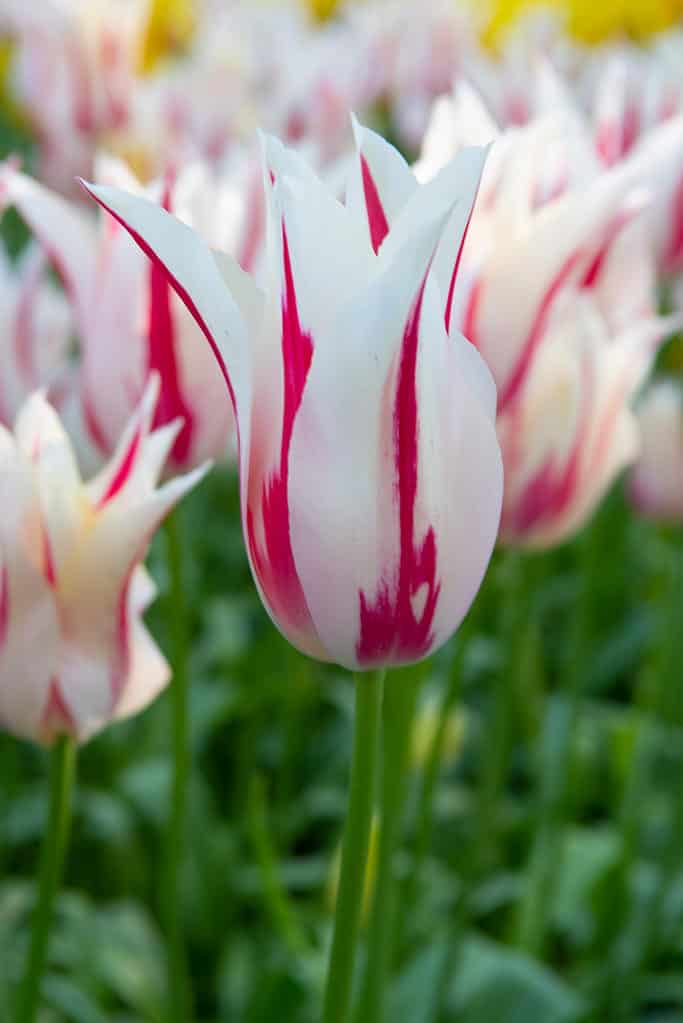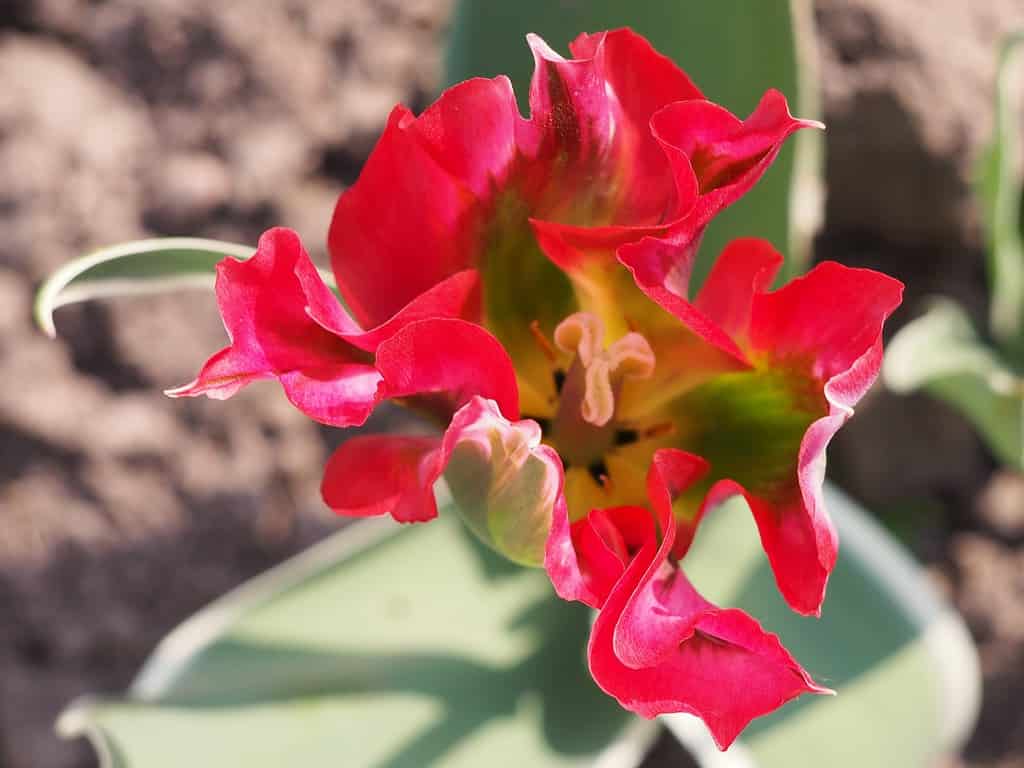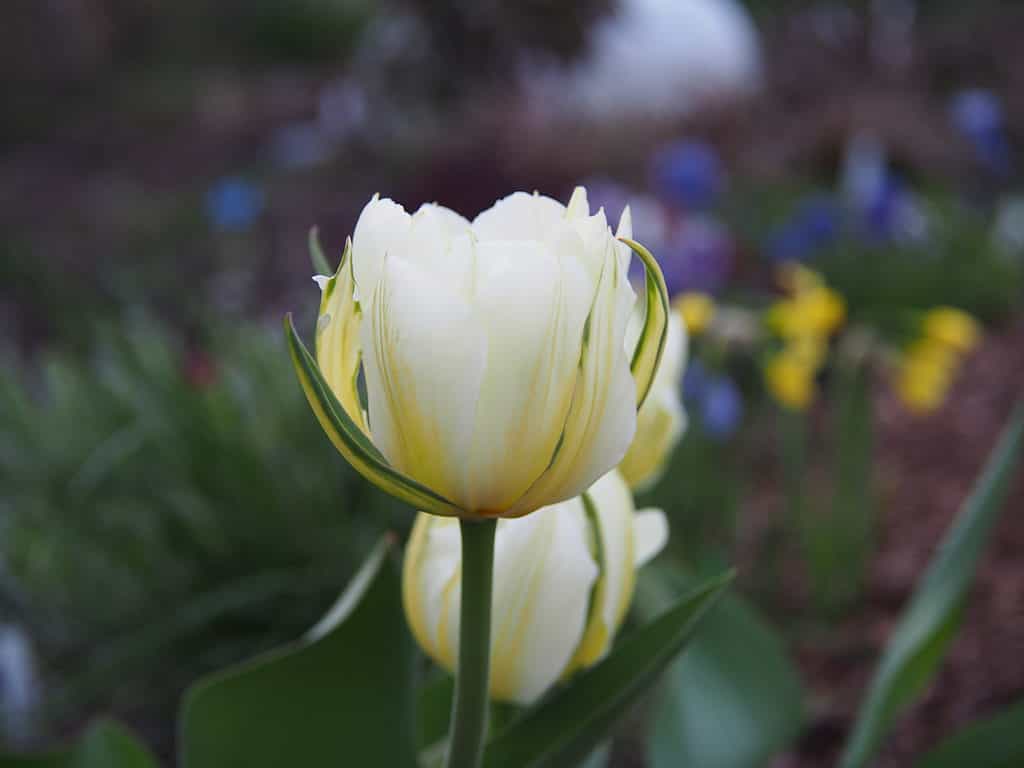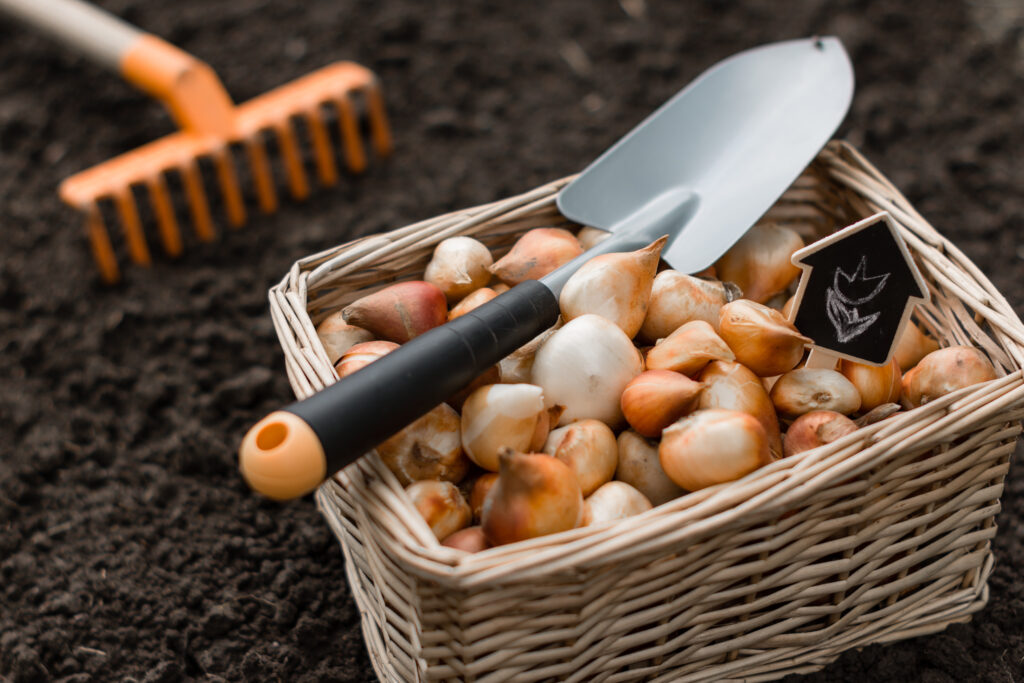What does the state of Maine have in common with the Netherlands? As it turns out, they both have a maritime climate that’s ideal for growing tulips. In particular, the hybridized tulip types that the Dutch have cultivated for centuries! It turns out that Maine’s cold snowy winters and cool summers provide just the right conditions for these sensitive bulbs. Read on to find out 5 tulips that grow great in Maine as well as how to plant and care for them.
5 Tulips that Grow Great in Maine
1. Tom Pouce Tulip

The ‘Tom Pouce’ tulip gets its name from its appearance to this Dutch pastry.
©Picture Partners/Shutterstock.com
Named after a traditional Dutch pastry, this mouth-watering variety looks pretty enough to eat. Their namesake pastry is filled with buttercream and topped with pink icing. Similarly, Tom Pouce tulip petals start out golden yellow at the base and give way to pretty pale to bright pink. If you’re looking for a classic goblet-shaped tulip with lovely tone, look no further, this bold Triumph variety is an excellent herald of spring for any Maine garden.
2. Marilyn Tulip

Marilyn Tulips have ivory petals accented with pink-red flames.
©InfoFlowersPlants/Shutterstock.com
For a pointy take on the tulip try out the ‘Marilyn’ variety, with its delicate ivory petals highlighted by flames of dark pink rising from the base. Marilyn tulips belong to the Lily-flowering group. These late-blooming beauties really bring on that springtime sunshine, reflecting its rays with a bright glow.
3. Cummins Tulip

The ‘Cummins’ features white fringe just like this Tulipa Hawaii in bloom.
©Sergey V Kalyakin/Shutterstock.com
The ‘Cummins’ is a fantastic example of a Fringed Group variety. Their violet-hued petals are tipped with frilly white edges. This crystalline fringe makes for a sassy take on the traditional tulip form. If you’re seeking a flashy addition to your spring display consider this show-stopper! Any tulip of the Fringed group will grow great in Maine and they provide an interesting twist on the classic tulip with their frilly petal borders.
4. Esperanto Tulip

Close-up of the Tulipa viridiflora ‘Esperanto’ flower.
©Agnieszka Kwiecień, Nova, CC BY-SA 4.0 via Wikimedia Commons – Original / License
An interesting member of the Viridiflora Group, Esperanto is a dance in the form of a flower. This tulip makes a real statement in the spring garden with bold blooms and unique foliage. Their green leaves with bright white edges make an excellent match to red and green streaked curling petals. These dramatic blooms are known to be long-lasting.
5. Exotic Emperor Tulip

The Exotic Emperor Tulip is a stunning early double variety with yellow accents and green stripes.
©Anna Gratys/Shutterstock.com
This is a Double Early flowering tulip variety that stands out in any garden. Also called White Valley, the Exotic Emperor tulip does look almost like a landscape when in full bloom! It has massive, creamy white double petals that fold out into a sweeping chalice shape. Soft yellow and green-edged sepals surround the petals, making for an exquisity display.
Are Tulips Annuals or Perennials?
Although tulips are technically perennials they are most often grown as annuals, especially the varieties listed above. If you’d like the best chance at growing them as perennials, you’ll want to choose a Species Group tulip, also known as Botanical tulips. These are unhybridized varieties that are closest to their ancestors who grew wild on the steppes and mountainsides of central Asia.
The hybridized varieties such as the Viridiflora, Triumph, Darwin Hybrid and Fringed Groups typically blossom in large, impressive displays, but these displays can weaken in subsequent years. It’s typically recommended to grow them as annuals.
When to Plant Tulips in Maine
All of Maine falls within USDA Hardiness Zones 3-6. Tulips are typically recommended for planting in zones 3-8, so tulips will grow great in any region of Maine. Not only do tulips appreciate cold winters for proper growth, they require the cold conditions that winter brings in order to prosper.
You’ll want to plant your tulip bulbs once the soil temperature drops below 60 degrees fahrenheit. Check out the predicted first freeze for your area and get them into the ground roughly 6-8 weeks before a hard frost is predicted. In the colder zones 3-4 planting time will likely fall between September and early October. For planting zones 5-6 you will likely be digging bulb holes from mid-October to early November.
How to Grow and Care for Tulips

Take care to give tulip bulbs proper spacing when planting and plant in clusters rather than rows for the best visual.
©Jurga Jot/Shutterstock.com
Tulips grow great in Maine in areas that receive full sunlight and have well-draining soil. If yours needs amending, consider soil amendments to improve the drainage quality. Add in a high-quality, low-nitrogen fertilizer before planting and add another layer as a top dressing in the spring to ensure happy, healthy growth. You can use a spring-bulb specific commercial blend, mature compost or well-aged manure.
Plant tulips in holes that are 2-3 times as deep as the height of the bulb. This will be about 6-8 inches deep for most tulip varieties. Space them at around 3-8 inches apart. Tulips look best when planted in clusters rather than clean rows. Place a single bulb in each hole and cover with soil. Adding a 2-3 inch layer of mulch atop the freshly planted bulbs will help to hold in moisture and keep the bulbs cool. Water thoroughly after planting just once and then leave them be until spring. You may not even need to water them again, as winter initiates the growth underground and the spring rains come to do the rest. If it doesn’t rain for 3-5 days you can water the blooming beauties. Be sure to avoid overwatering, as tulips are sensitive to fungus and other problems.
Special Considerations for the Rainy Season
The tulip displays at Coastal Maine Botanical Gardens were once a spring sight to behold but in recent years they’ve decided to focus on other spring bulbs. This change was the result of a fungal disease that affected more than 40,000 tulips of their 2019 blooming season. The spring had been particularly wet and the conditions led to the fuzzy gray mold infecting the fields. If you’re experiencing or expecting a very rainy, cloudy and wet spring season you may want to read further about Botrytis blight to discover its causes, symptoms and the ways you can manage it. If you’re tulips are affected and you need to give your beds a rest, try planting other bulbs like daffodils or hyacinths in their place.
When do Tulips Bloom in Maine?
Tulips bloom in Maine during the Spring. When exactly they will burst forth from the soil is mostly dependent on bulb type, although growing region will also impact timing. The ‘Exotic Emperor’ will bloom early in the season, during April. Triumph varieties like ‘Tom Pouce’ bloom from early to mid-Spring, often in May. Later in the season, you’ll see the Fringed Group tulips, like ‘Cummins’ and the Lily-flowering varieties like the ‘Marilyn’ making their appearance.
Plant a mix of early, mid and late season varieties for cheerful, multi-hued beds that last the whole season. Once your tulips have had their time to shine and have begun to wilt you’ll want to clip the flower heads if growing them as perennial flowers. Let the leaves grow and produce energy and only clip them back once they have entirely wilted. If you’re growing as annuals, like most gardeners in Maine do, you’ll dig up the post-blossom bulbs and compost them. Now you can start planning your beds for the next season and decide what new varieties you’d like to cultivate!
The photo featured at the top of this post is © Sergey V Kalyakin/Shutterstock.com
Thank you for reading! Have some feedback for us? Contact the AZ Animals editorial team.







